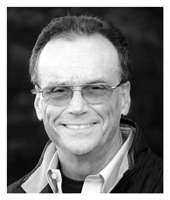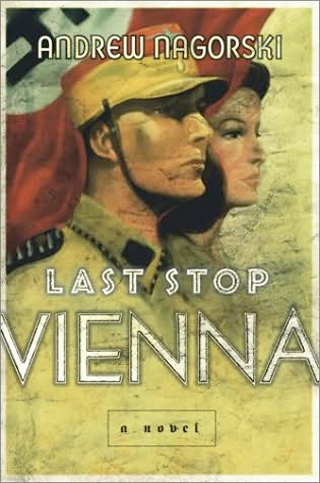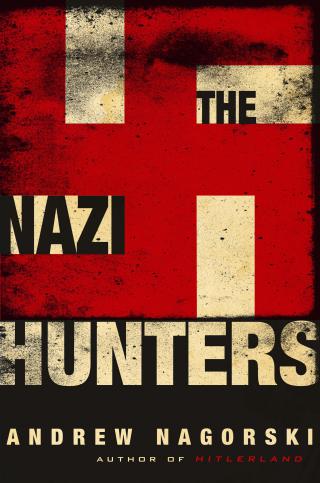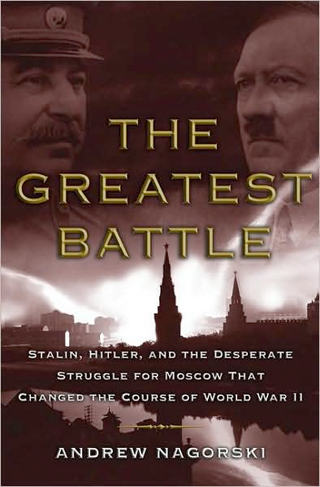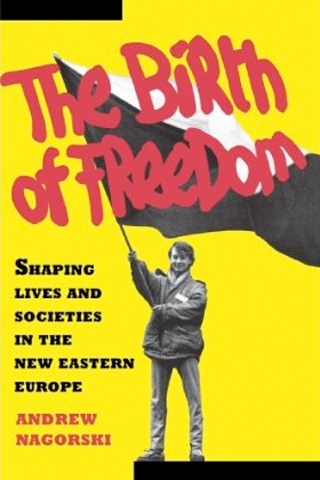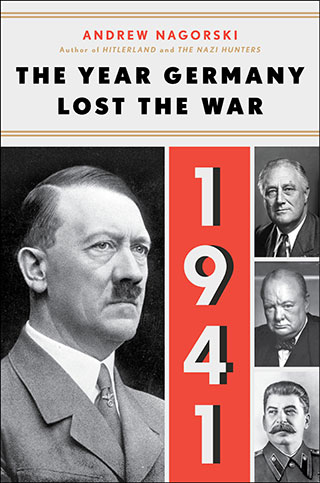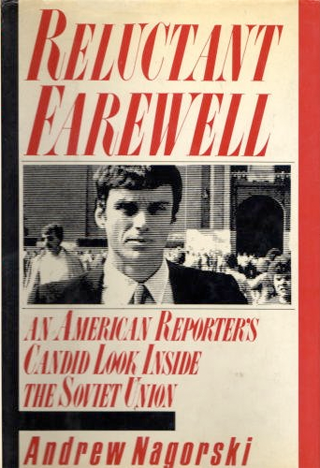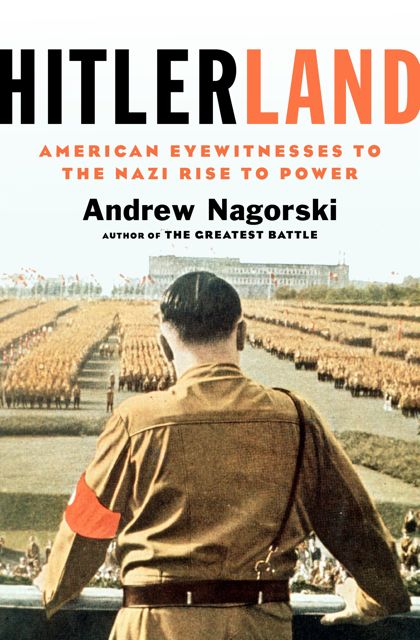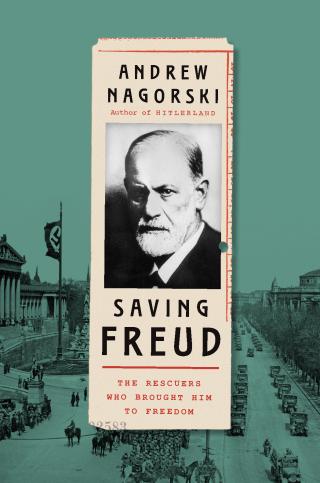Ten top-ranking Nazis were sent to the gallows in 1946 by the international war crimes tribunal in Nuremberg. Many more escaped justice for decades or forever, some by taking their own lives, some by going into hiding and some merely because all but a few dedicated avengers lost interest in them. In “The Nazi Hunters,” Andrew Nagorski scrutinizes the varying backgrounds, means and motives of the small number of investigators and prosecutors who refused to give up. “Notions of revenge and justice were often intermingled,” Nagorski writes of the effort to punish Nazi war criminals, “whatever the motives of the executioners themselves.”
Nagorski is a veteran author and foreign correspondent whose “Hitlerland: American Eyewitnesses to the Nazi Rise to Power” is the alpha to the omega of “The Nazi Hunters.” Even before the final defeat of Germany, as Nagorski points out, partisans and surviving inmates of liberated concentration camps were subjecting their persecutors to rough justice. For a few years after the first Nazi war criminals felt nooses around their necks, hundreds more were judged and condemned in less-celebrated trials conducted by both the Allied victors and by the countries only recently liberated from German occupation. But Nagorski also allows us to see that the ardor for finding and punishing war criminals quickly abated, and the task fell to a handful of self-appointed seekers of retribution.
Among the Nazi hunters whose lives and work are reprised in Nagorski’s book are figures who are now, like Simon Wiesenthal, nearly mythic. But Nagorski insists on affording both blame and credit wherever they are due. At the heart of his book is the agonizing saga of Nazi hunters such as Tuvia Friedman — who has been mostly overshadowed by Wiesenthal — and Mossad Director Isser Harel and West German Attorney General Fritz Bauer, who both worked to locate and recover Adolf Eichmann. Their tales feature moments of intrepidity and recrimination in equal measure. Indeed, the Eichmann case is not the only one in which Nagorski perceives that the Nazi hunters battled each other as much as they fought those who had served the Third Reich.
That was particularly evident in the case of Kurt Waldheim, who had already served as secretary general of the United Nations and was running for the presidency of Austria in 1986 when his Nazi associations came to public attention. It turned out that Waldheim had served under a superior officer who was later hanged as a war criminal, and questions were raised about Waldheim’s war record. Waldheim went on to win his election, but the revelations “not only ignited a fiery debate on the campaign trail but also led to angry recriminations among rival Nazi hunters, and between the Jewish community in Austria and the New York-based World Jewish Congress,” as Nagorski reports. “No one emerged a clear winner, and many reputations were tarred in the process.”
Nagorski also introduces us to Nazi hunters whose exploits have been mostly overlooked. Jan Sehn, described as “about as original a Nazi hunter as could be imagined,” was a Polish investigative judge who interrogated and prosecuted Auschwitz camp commandant Rudolf Höss. Sehn may have been atoning for his own German ancestry when he dedicated himself to gathering, preserving and presenting hard evidence of the war crimes of Poland’s occupiers. Höss, too, was sentenced to die, but even more important is the testimony that Sehn extracted from him before he was hanged. From the witness stand, Höss provided a flat repudiation to the Holocaust deniers: “The ‘final solution’ of the Jewish question,” he testified, “meant the complete extermination of all Jews in Europe.”
Much of Nagorski’s evidence is archival, but he has also found his way to some firsthand testimony from the last surviving participants in the war-crimes trials. Benjamin Ferencz, for example, was 93 years old when Nagorski interviewed him in Florida in 2013, and Ferencz vividly recounted his experiences as a young war-crimes investigator and prosecutor in postwar Europe. When Ferencz examined a cache of secret reports in a Gestapo file that detailed the shootings of Jews, gypsies and civilians by mobile killing units on the Eastern Front, he went to work with an adding machine. “When I passed the figure of one million, I stopped adding,” Ferencz recalled. “That was quite enough for me.” Armed with documentary evidence, he served as the U.S. prosecutor in the trial of the willing executioners whose fingers were actually on the triggers, a proceeding the Associated Press called the “biggest murder trial in history.”
Nagorski also reminds us of the ugly fact that the West seemed to lose interest in the punishment of Nazi war criminals during the Cold War. At that time, some former Nazis in West Germany were regarded as useful collaborators in the struggle against our new adversaries behind the Iron Curtain — precisely because they had proved to be such ruthless enemies of the Soviet Union during World War II. Thus did the Advisory Board of Clemency, headed by Cold War power broker John J. McCloy, commute the death sentences and reduce the prison terms of various Nazi war criminals, an act that Nuremberg prosecutor Telford Taylor condemned as “the embodiment of political expediency.”
As many as 10,000 participants in Nazi war crimes may have been welcomed to the United States under a law that was meant to shelter the victims of Nazi aggression and persecution. Only the efforts of a few freelance Nazi hunters such as Serge and Beate Klarsfeld, who delivered SS officer Klaus Barbie to a French courtroom in 1987, and a few prosecutors who acted on the available evidence have continued to remind the world of the war criminals who live among us.
Nagorski acknowledges the sharp debate over the diminishing returns of Nazi hunting at a time when the last of the perpetrators are far more likely to die of old age than at the end of a rope. Still, he sees a transcendent and enduring purpose to all these exertions. “Genocide” — a term coined in 1933 by the Polish-Jewish lawyer Raphael Lemkin and first used in court by Ferencz in a trial of Nazi war criminals — is now an established principle of international law. Remarkably, it was Ferencz who delivered the closing argument in the first trial of the International Criminal Court in 2011, when a Congolese rebel leader was convicted of recruiting child soldiers. And a line from his closing argument in the Einsatzgruppen trial was quoted in the proceedings of U.N. tribunals on war crimes in Yugoslavia and Rwanda: “If these men be immune, then law has lost its meaning, and man must live in fear.”
Exactly here is the raison d’etre for Nagorski’s deep and sweeping account of a relentless search for justice that began in 1945 and is only now coming to an end.
Jonathan Kirsch, book editor of the Jewish Journal, is the author of, most recently, “The Short, Strange Life of Herschel Grynszpan: A Boy Avenger, a Nazi Diplomat and a Murder in Paris.”
